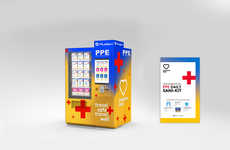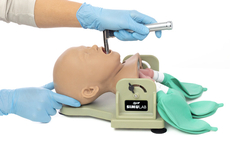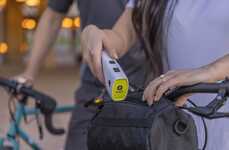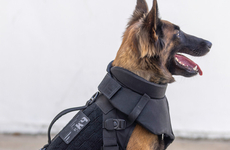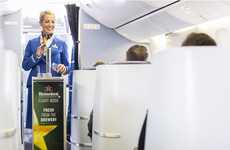
PATT Teaches TSA Officers the Ropes of Pat-Down Procedures
References: dhs.gov & digitaltrends
The TSA succumbs to its fair share of criticism for everything from passenger screenings to pat-down procedures, but considering that the federal organization screens more that two million passengers every day, it's impressive that it doesn't court even more controversy. The TSA is committed to preserving the safety of US travelers and citizens while still adhering to their rights as travelers, and the new PATT mannequin is a tool that can help officers with that commitment.
PATT, which is short for Pat-down Accuracy Training Tool, is a stand-alone mannequin that comes in both male and female body types. Both models contain a layer of sensors throughout the entire mannequin that measure the amount of pressure officers are applying while patting it down. Those sensors are connected to a computer that registers this pressure, and the data can be used to improve trainees' techniques.
PATT, which is short for Pat-down Accuracy Training Tool, is a stand-alone mannequin that comes in both male and female body types. Both models contain a layer of sensors throughout the entire mannequin that measure the amount of pressure officers are applying while patting it down. Those sensors are connected to a computer that registers this pressure, and the data can be used to improve trainees' techniques.
Trend Themes
1. Pressure Sensing Technology - Deploying pressure sensing technology in training tools can lead to improved techniques in various industries.
2. Accuracy Training Tools - The development of accuracy training tools can enhance performance and efficiency in professions that require precise skills.
3. Data-driven Training - Using data collected from training tools can optimize learning outcomes and improve performance in different sectors.
Industry Implications
1. Security and Law Enforcement - The security and law enforcement industry can benefit from implementing pressure sensing training tools to enhance pat-down procedures and ensure accuracy.
2. Healthcare Training - Healthcare professionals can utilize accuracy training tools with pressure sensing technology to improve their techniques in procedures that require precision.
3. Sports Performance Training - Athletes and coaches can explore the use of data-driven training tools incorporating pressure sensing technology to enhance movement precision and technique.
0.5
Score
Popularity
Activity
Freshness





